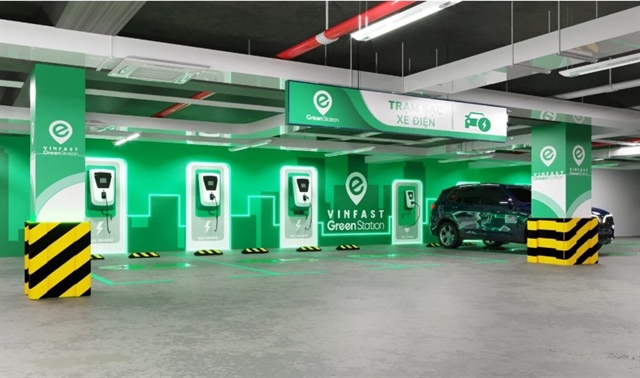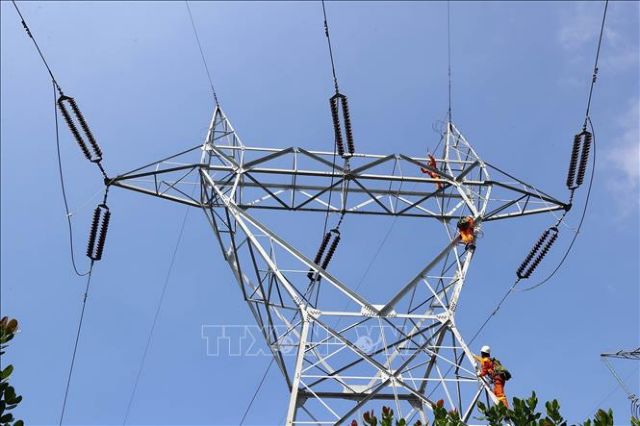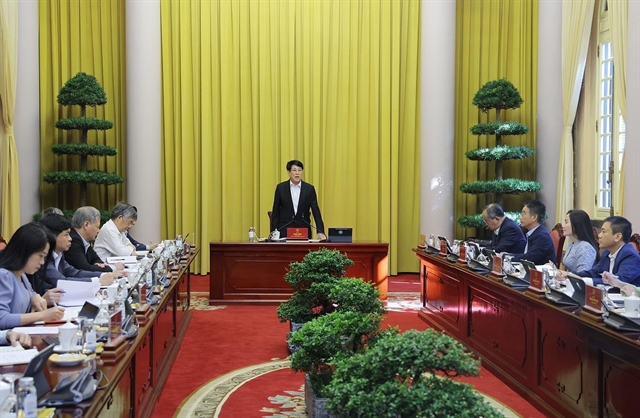 - QUẢNG TRƯỜNG ĐỘC LẬP.JPG) Economy
Economy
 - QUẢNG TRƯỜNG ĐỘC LẬP.JPG)

|
| A VinFast charging station in Hà Nội. VinFast Photo |
HÀ NỘI - With the increasing domestic sales of electric vehicles (EV), active participation of imported electric car manufacturers, and the flourishing of electric vehicle transportation services, Việt Nam is facing numerous challenges regarding charging station infrastructure in the coming years.
During 2018-22, there were 7,780 registered EVs nationwide. However, since the beginning of 2023, this figure has increased to nearly 20,000, with a large portion contributed by the rise in popularity of VinFast, the country's largest EV maker.
In addition, a number of domestic brands, including TMT Motor, THACO and TC Motor have since been making their moves in a bid to compete with VinFast for the Việt Nam market, on top of foreign brands such as OMODA, Wuling, Haima, Haval, Zhidou and Lynk & Co. Industry experts have said there are reasons to anticipate a rapid growth period for EV production in Việt Nam in the near future.
Meanwhile, the country's charging station infrastructure has been trailing behind with VinFast being the only major service provider with more than 150,000 stations across the country as reported in 2021. In the last few years, the company, however, has been focusing on new products, battery technology, transport services, exports and the construction of its factory in the US.
There has been no announcement from the company regarding a plan for the expansion of Việt Nam's charging station network. The company has also made it public that it will not be sharing charging stations with other brands, at least for the next 10 years, a move similar to Tesla at the beginning of the proliferation of EVs in the US.
Despite efforts by other brands to build additional charging stations, demand will likely significantly outpace supply in the next few years, experts say. They have been voicing their concerns over the next phase in the development of EVs in Việt Nam and calling on the government to take additional steps to support it.
In a recent proposal by the Ministry of Transport, the ministry urged the government to implement a series of policies to encourage new investment and renovation projects to establish charging station networks in the country. The ministry stressed the importance of financial support, transparent legal framework, tariff and tax cuts, electricity pricing and supply as key components for the development and operation of charging stations.
Notably, the ministry proposed a scheme for electricity pricing in which retail electricity prices (for charging stations) are categorised based on voltage level, normal hours, off-peak hours, and peak hours. The lowest rate was 68 per cent of the average retail electricity price (1,306 VND/kWh), and the highest would be 205 per cent of the average retail electricity price (3,937 VND/kWh), VAT not included.
"Giving charging station companies a lower electricity rate is a significant support policy, which will encourage more companies to invest in the new industry and in my opinion it's something that should be done immediately," said Nguyễn Ngọc Cường, CEO of EverEV Corporation, a company specialising in charging station infrastructure.
He said many Vietnamese companies already possessed the know-how in manufacturing and installing charging stations. However, due to a lack of domestic suppliers, they must still work with foreign partners. A streamlined import protocol for charging technologies and components, therefore, is crucial to their operations.
Even VinFast's charging station network has started showing signs of being congested with the rapid increase in the number of EVs in recent years, especially after the company debuted its own EV taxi service, Taxi Xanh SM in June.
Another approach to solve the issue is home charging, which has been a popular choice for many new owners of EVs. However, it is a solution not readily available to many owners who do not have their own garages or sufficient space and power supply. VNS
 - QUẢNG TRƯỜNG ĐỘC LẬP.JPG)



